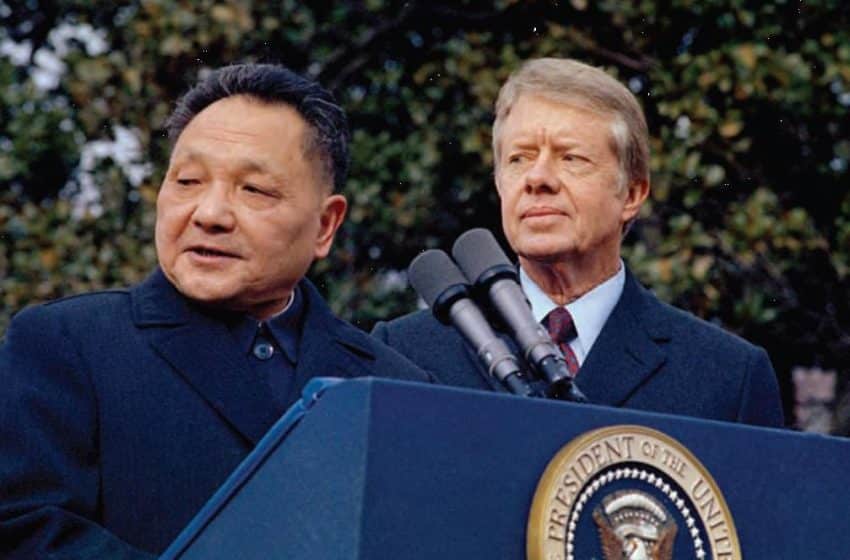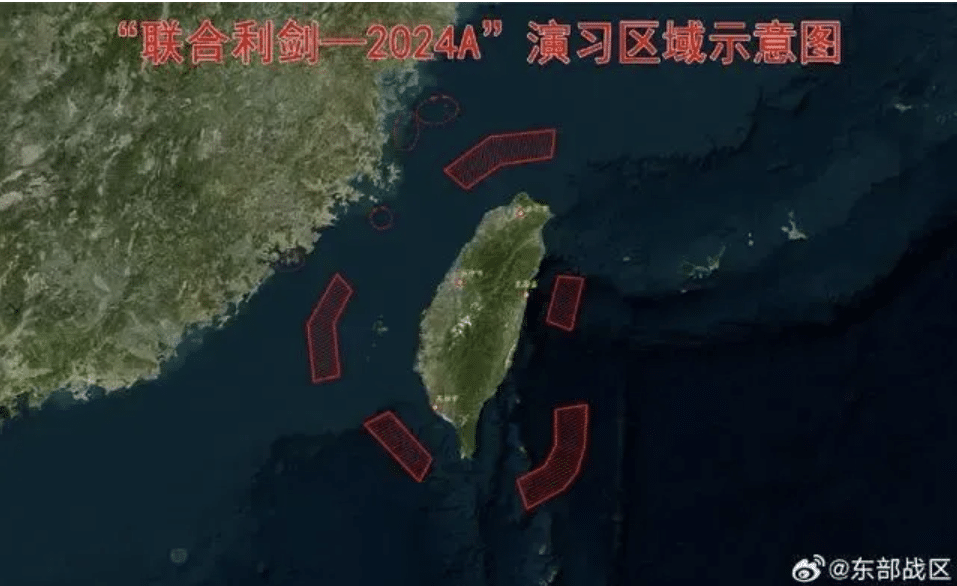Has the Wounded Giant Stood Up Again? An Assessment of Huawei’s Release of Its New Smartphone
- Analysis
 Juan Zhang
Juan Zhang- 09/08/2023
- 0
After Huawei’s release of the Mate 60 Pro smartphone, the U.S-.China Perception Monitor emailed the following two questions to a small group of experts on technology in U.S.-China relations. Five scholars submitted responses to these questions. While most experts believe the U.S.’s policies on export controls have only been a partial success (if not a failure), there is consensus that these policies might be worth reevaluating. Similarly, even though Huawei’s new smartphone might not be a hugely revolutionary innovation, it is evidentiary support that China’s prominence and self-sufficiency in the technology race is growing. Four of the five authors have contributed to The Carter Center’s Report entitled: Finding Firmer Ground: The Role of High Technology and Its Impact on U.S.-China Relations.
Huawei’s new Mate 60 Pro smartphone, powered by a new Kirin 9000s chip made in China, has drawn much attention industry-wide and among policymakers in the United States. While the U.S. government is seeking more information about Mate 60 Pro, do you see the new phone as a failure or setback for the “small yard and high fence” policy?
While the U.S. is restricting China’s access to advanced chips that may be used in the military, do you think Huawei’s success is a result of China’s enhanced capability, or the technology that made this chip manufacturing for Mate 60 is illegally transferred to China? How would you anticipate the US government’s next move to strengthen tech competition with China, or which areas do you think should be enhanced or relaxed?
U.S. Needs to Examine Its “Yard” and “Fence” on a Regular Basis
Rorry Daniels, Managing Director of Asia Society Policy Institute
Huawei’s nascent chip breakthrough shows how difficult it is in a globalized economy to create the type of protection conceptualized in a “small yard, high fence” strategy. The U.S. has exercised considerable power to slow the speed of China’s chip development through export restrictions, but even that effort has not been enough to prevent China’s indigenous development.
Some may argue that China illegally obtained the IP and therefore the current execution of the “small yard, high fence” strategy through export restrictions could be improved by stronger enforcement and harsher penalties. But the experience of international sanctions and other restrictions tell us that implementation cannot be perfected—fences must be regularly reinforced or leakage is inevitable.
Furthermore, the strategy requires a regular review and refresh of what belongs in the “yard.” Semiconductor technology is evolving. What is considered an ‘advanced’ semiconductor today might be tossed out of the yard next year. New dual-use capabilities may crop up. Conceptually, the U.S. will need to define whether the fence moves or the yard grows over time. A “big yard, high fence” strategy will be even more costly to execute and even more difficult to defend.
There is value in a direct, frank and continuous discussion between the U.S. and China on each other’s strategic intentions and mutual mistrust. If companies have violated U.S. law, they should be named, shamed and bear an appropriate cost. But the U.S. cannot forever punish its way to military primacy by stunting China’s capabilities. Equal attention should be paid to China’s intentions and to persuading China, through diplomacy and statecraft, that it has more to gain by pursuing peaceful pathways than it loses by exercising military restraint.
Building a high fence around a small yard is a conceptually elegant way to describe the ideal outcome for the U.S. of deeply protecting a small amount of critical high technology while staying as open to the global economy as possible. The devil is in the details of what is in the yard and how the fence is built. While it’s easy to blame Huawei and the Chinese state apparatus’ perfidy for these developments, the Mate 60 breakthrough should also prompt a review of whether an elegant conceptual strategy can be equally elegant in its execution. Evidence to date suggests that the U.S. has launched with an imperfect formula and should recalibrate either expectations or implementation.
Huawei’s New Chip Signals Possible Deficiency in US Export Controls
John Lee, Director of East West Futures Consulting
The new Huawei chipset (Kirin 9000S) unveiled in September does not represent an innovative technological ‘breakthrough’, but it is still a significant achievement that should prompt reflection on the efficacy of the current US export controls approach towards China. The chip is almost certainly fabricated by SMIC using its ‘N+2’ FINFET process, which is described as a ‘7 nanometre (nm)’ process and is the most advanced chip manufacturing node operated by a Chinese firm.
Denying China access to chips fabricated at 14nm process nodes or lower (meaning more advanced technology) was among the framing goals of the October 2022 export controls. Even before these controls were adopted, SMIC was already known to have the capabilities necessary to replicate TSMC’s achievement with the latter’s initial 7 nanometre process, which was introduced before ASML’s extreme ultraviolet lithography (EUV) machines became available. Furthermore, SMIC demonstrated the capacity to produce a sub-14nm chip (using SMIC’s N+1 process) in 2022.
But the 2022 chip was a less complex bitcoin mining chip that was assumed to be produced in relatively small numbers. The new chip being used in Huawei’s new flagship smartphone suggests that SMIC can produce it both at significant scale and at a commercially viable cost (allowing for support from government subsidies). This implies that the yield SMIC can now obtain from its N+2 process is significantly higher than assumed by some foreign analysts, allowing it to produce this chip for Huawei while simultaneously servicing other clients and the Chinese state’s strategic priorities.
Furthermore, this has been achieved with SMIC operating under US sanctions (being on the Commerce Department’s Entity List and Treasury OFAC’s CMIC List) and with access to fabrication equipment, for which China still relies extensively on foreign suppliers, being controlled under the October 2022 interim regulation. Various analysts attribute this to flawed design and ineffective enforcement of the October controls, which has allowed SMIC to continue procuring foreign supplied equipment in large quantities. Potential reasons given for this outcome include the controls’ framing (with many of the controlled items being applicable to older generation fabrication processes, not only sub-14nm), the use of shell companies as procurement fronts, and other tactics used by Chinese entities to facilitate foreign procurements that nominally comply with the October controls but in fact support SMIC’s expansion of production capacity in advanced nodes.
The new chip also incorporates features showcasing advanced capabilities, for example an integrated 5G modem comparable to cutting-edge products from foreign sector leaders like Qualcomm. This indicates that Huawei’s chip design capabilities have not atrophied under US sanctions and export controls dating back to 2019 but, to the contrary, have continued advancing. Having access to a high yield 7nm fabrication process from a domestic provider does not substitute for Chinese firms’ loss of access to foreign fabrication leaders like TSMC. But combined with their accumulated stock of foreign chips and continued ability to acquire these at slightly lower performance levels as well as to access US industry-provided computing infrastructure abroad, it puts them in a position to deliver limited use cases that are (or may be) seen by the Chinese state as of strategic importance, such as supporting China’s next-generation telecoms infrastructure rollout or training large language models.
The ability of Huawei and SMIC between them to deliver smartphone chips competitive with recent foreign offerings also implies major revenue losses to US firms. One analyst has estimated the potential loss to Qualcomm in 2024 as 50-60 billion units (equating to almost $US11 billion) from lost sales to Huawei alone as the Chinese firm replaces these with its own chips, with potential further losses from adoption of Huawei chips by other Chinese phone vendors. Such outcomes would reflect warnings that driving Chinese firms to import substitutes will be costly for US companies, whose industry leadership the October export controls and other trade restrictions are intended to protect.
It is too early to conclude whether the ‘small yard, high fence’ approach, and the October export controls specifically, are achieving the intended goals of keeping China decisively behind the US in progress with strategic technologies. But the new Huawei chip is a clear signal that the framing and enforcement of such measures needs rigorous scrutiny if it is to achieve the stated policy objectives. US industry leaders like Intel are advocating an assessment of the current controls’ impact before further measures are introduced targeting China’s access to semiconductors. Showing the efficacy of US controls is also important to maintaining cooperation from allied states such as the Netherlands and Japan, which have introduced their own controls on exports of chip-related technologies to China but are conscious of negative impacts on their own firms that sell such products and services, in a context where these firms are competing against each other and US vendors for Chinese business.
Huawei’s Chip Success Does Not Mean U.S. Policy Has Failed
Zongyuan Zoe Liu, Fellow for China Studies at the Council on Foreign Relations
This latest development suggests an important achievement for China’s semiconductor sector but does not necessarily represent a failure or setback for the “small yard and high fence” policy.
Huawei’s Mate 60 Pro, its new model high-end smartphone, has an exceptionally high proportion of parts designed and manufactured by indigenous Chinese firms, including its main processor, the 7 nm Kirin 9000s chip made by SMIC. This achievement signals a breakthrough for China’s semiconductor industry. This breakthrough is exceptional, considering SMIC does not have access to advanced extreme ultraviolet (EUV) lithography equipment due to export controls that restricted the Dutch firm ASML from selling advanced EUV machines to its Chinese customers.
However, while this signals a technology breakthrough, it remains unclear whether the processor technology can economically scale up at a competitive cost. Otherwise, less advanced tech at higher costs cannot make Huawei – and China’s indigenous semiconductor sector – compete successfully with the world’s leading brand and achieve definitive success in the tech competition. Furthermore, the new smartphone model has important foreign parts, such as SK Hynix’s 12 GB LPDDR5 chip and 512 GB NAND flash chip, which has triggered some questions and investigations. It is important to recognize that Huawei’s use of domestic parts and domestic processor technology is not necessarily the optimal preference but rather the suboptimal choice primarily due to U.S. export controls. Despite Huawei’s efforts to keep a low profile regarding the new product launch, it has alerted the U.S. government and reportedly triggered investigations. Some U.S. lawmakers even demanded stricter measures and full sanctions. If this were to materialize, it would further raise the cost of R&D for the Chinese semiconductors industry.
While China certainly has the talent, and the Chinese government has just created a new semiconductor fund to prioritize financial support for the sector, additional tech restrictions would inevitably raise costs and increase the barrier to China’s technology innovation. Higher costs may not have been too big a concern ten years ago when the Chinese economy was rapidly growing, but as China’s economic growth slows down and Chinese consumers are less willing to spend but prefer to save, increasing government R&D investment may come at the expense of social welfare spending or family support. In other words, the Chinese government may have to make difficult choices when its prioritized strategic sectors are challenged with more stringent restrictions if the Chinese economic growth fails to achieve robust recovery due to structural woes and policy missteps. In this context, Huawei’s new smartphone is not a failure or setback for the “small yard and high fence” policy.
US Needs to Pause and Reassess Its Export Controls Measures
Shirley Martey Hargis, Nonresident Fellow in the Atlantic Council’s Global China Hub and Digital Forensic Research Lab
The creation of Huawei’s Mate 60 Pro has rightfully put US policymakers on notice. The surprising new development of China’s Kirin 9000s chip increases domestic and global scrutiny of the small yard and high fence policy. Huawei and Semiconductor Manufacturing International Corporation (SMIC) are both on the entity list, affected by the US government’s October 7th regulations, which clearly state that all US companies are prohibited from assisting Chinese companies with below 14 nanometers using American technology. Seemingly overnight, China is now at 7. Even more fascinating is that Huawei has been able to maintain and improve upon its design, which was unexpected after US bans.
The small yard and high fence policy attempts to identify which critical technologies are core to US national interests. As far as anyone knows, the other option is to return to the previous administration’s cross-board restrictions. However, China’s SMIC 7 is impactful enough for a pause and reassess. Economically, the small yard, high fence policy may need to be fully readdressed; however, it could also be seen as a setback depending on how the US decides to address its approach.
US export controls created challenges, forcing China to circumvent them. We may hurt our own industries in the long run because we decided not to sell chips to China. While China already had plans to increasingly advance in semiconductors, we accelerated the process by putting export controls on chips. Export controls on equipment are more reasonable, but our actions will lead Qualcomm, an American semiconductor company, to lose significant business in China.
The framing has been that the US and China are competing against one another to shape policymaking on emerging technologies and AI, which are core to setting standards for global regulations. That said, we are behind the curve. Only this February, China released its English version of “China Digital,” the PRC’s digital strategy that they had already been developing for over ten years, covering quantum computing over the last decade. This strategy is intended to support its digital transformation.
Since the SMIC 7 chip announcement, many want to focus on the low output. However, low yield at the onset is standard for every new semiconductor, including Intel and TSMC. We must remember that there is no question that China will continually perfect its semiconductors.
Semiconductors are not a science but an art form. China gets to focus only on China, while NVIDIA must address customers globally. Marrying granularities with policy is incredibly difficult; however, the costs are growing at a rate that does not benefit America’s growth.
Does U.S. Entity List Work in Curtailing China’s Tech Advance?
Sara Hsu, Clinical Associate Professor of Supply Chain Management at the University of Tennessee Knoxville
Technological advances on both sides are bound to happen, and Huawei is trying to get back into the game with this phone. However, it does shine a light on the need for the US government to closely monitor and examine Chinese technological innovations and create policies that protect American interests, both in terms of national security as well as economically. While observing Chinese innovations, US watchdogs must keep in mind that chipmakers, no matter where they are in the world, depend on China to some extent for certain production inputs. This means that cutting off technology ties with China will also hurt US tech firms. Therefore, whatever the US government does with regard to China matters a lot to American businesses.
I do not know the origin of the Kirin 9000s chip. However, it is a 7 nm chip, as compared to 4 nm chips currently used in phones, so it is clear that Chinese technology still remains behind that of American technology. It is possible, then, that the chip was made in China.
Despite the fact that Chinese technology continues to lag behind American technology, there is a lot of outrage and concern in the US about the release of this new phone with the Kirin chip, with one Representative saying that SMIC broke the law by providing Huawei with this chip. That comment went a bit too far, but the sentiment is there—that the US must contain Chinese technological development. I believe the Biden administration will have a strong reaction to this innovation, warranted or not. The question is, will the administration react to every technological development made by all companies on the entity list? And if so, is listing Chinese companies on the entity list not enough?
Author
-

Juan Zhang is a senior writer for the U.S.-China Perception Monitor and managing editor for 中美印象 (The Monitor’s Chinese language publication).







